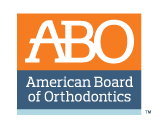November 7th, 2024
It’s vital to understand the difference between an orthodontic emergency and minor orthodontic issues. Minor issues can be handled the next day, or at your next scheduled appointment. When a real orthodontic emergency occurs, however, you will need to see a doctor immediately. Emergencies can include injuries to your teeth, jaw, mouth, or face. Whether…
Continue Reading
October 30th, 2024
It’s that time of year again—Halloween! Carving pumpkins. Creating costumes. And, of course, collecting candy. But some of the candies in that collection aren’t much of a treat for your teeth. When you’re deciding on the perfect pieces to choose from the candy cauldron, here are some tricks to identify the ones that can be…
Continue Reading
October 23rd, 2024
A solid oral health routine begins with daily brushing, flossing, and rinsing. Without a consistent oral health regimen, you may begin to experience tooth decay and bacterial infections. Few patients ask Dr. Joseph Gregg about different mouthwash options, so we’ve put together a list of the conditions that mouthwashes can treat. This should help you…
Continue Reading
October 17th, 2024
Getting your child excited about braces is a lot like: A) convincing a grumpy toddler that it’s time to take a nap? B) convincing a teenager to stop texting during dinner? C) convincing your husband to eat his peas? The answer, obviously, is all of the above. And that’s why you may need a few…
Continue Reading





